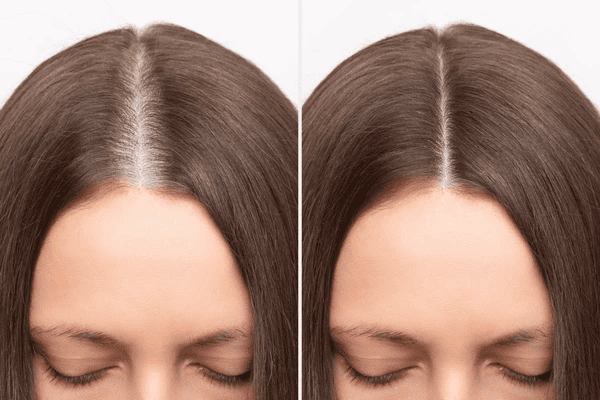DHT Blockers
What is a DHT Blocker?
A DHT blocker is a substance that helps reduce or inhibit the effects of dihydrotestosterone (DHT), a hormone derived from testosterone. DHT plays a key role in several biological processes but is also associated with conditions like hair loss (androgenetic alopecia) and prostate enlargement (benign prostatic hyperplasia, or BPH).
How DHT Works
DHT is formed when the enzyme 5-alpha-reductase converts testosterone into its more potent form, DHT.
DHT binds to androgen receptors in hair follicles and other tissues. In genetically susceptible individuals, this can cause:
Hair Follicle Miniaturization: Hair follicles shrink, producing thinner and weaker hair strands, eventually leading to hair loss.
Prostate Growth: Stimulates prostate cell proliferation, which can lead to enlargement.
What DHT Blockers Do
DHT blockers work by reducing DHT production, blocking its binding to receptors, or inhibiting the enzyme that produces it. This helps mitigate its effects, especially in hair follicles and the prostate.

Types of DHT Blockers
5-Alpha-Reductase Inhibitors
These prevent the conversion of testosterone into DHT.
Examples:
Finasteride (Propecia/Proscar): A synthetic drug that selectively inhibits the type II form of 5-alpha-reductase.
Dutasteride (Avodart): A more potent drug that inhibits both type I and type II forms of the enzyme.
Natural DHT Blockers
Plant-based substances with mild inhibitory effects on DHT or androgen receptors.
Examples:
Saw Palmetto: Inhibits 5-alpha-reductase and DHT binding.
Pumpkin Seed Oil: Contains phytochemicals that may reduce DHT levels.
Green Tea (EGCG): Antioxidants in green tea may have anti-androgenic properties.
Pygeum Africanum: Extract used for prostate health, possibly reducing DHT activity.
Comparing Synthetic DHT Blockers to Natural Supplements
Finasteride is far more potent and reliable than saw palmetto for reducing DHT levels and treating hair loss. However, for those seeking a natural or less potent option with fewer side effects, saw palmetto may be worth considering. The degree of efficacy varies; natural blockers are generally less potent than prescription medications.
Saw Palmetto
Source and Mechanism:
Saw palmetto is a natural extract derived from the berries of the Serenoa repens plant.
It works by inhibiting 5-alpha-reductase, the enzyme that converts testosterone into DHT, albeit less potently than finasteride. Additionally, it may block DHT from binding to androgen receptors in hair follicles.
Efficacy:
Saw palmetto has been shown in some studies to modestly reduce DHT levels, particularly in the scalp and prostate.
Clinical evidence suggests it may provide mild to moderate benefits for conditions like androgenic alopecia (hair loss) and benign prostatic hyperplasia (BPH), though the results are variable.
Reduction in DHT levels with saw palmetto is typically less than 30%, according to some studies.
Safety:
Saw palmetto is generally well-tolerated with fewer reported side effects, though some people may experience mild gastrointestinal discomfort or headaches.
It is available over-the-counter and often included in supplements targeting hair loss or prostate health.
Finasteride
Source and Mechanism:
Finasteride is a synthetic prescription medication (marketed as Propecia for hair loss and Proscar for BPH).
It works as a highly selective inhibitor of 5-alpha-reductase type II, the primary enzyme responsible for DHT production in the scalp and prostate.
Studies suggest that finasteride at 1.25 mg or 2.5 mg per day may help women with hair loss.
Efficacy:
Finasteride has been shown to reduce DHT levels by approximately 60-70%, making it significantly more potent than saw palmetto.
It is a clinically proven treatment for male pattern baldness and BPH, with robust evidence from randomized controlled trials.
Safety:
While finasteride is effective, it can cause side effects in a small percentage of users, including decreased libido, erectile dysfunction, and gynecomastia (breast tissue enlargement in men).
Finasteride for hair loss in women is an off-label use. This means the FDA doesn't provide standard dose recommendations for women taking it.
